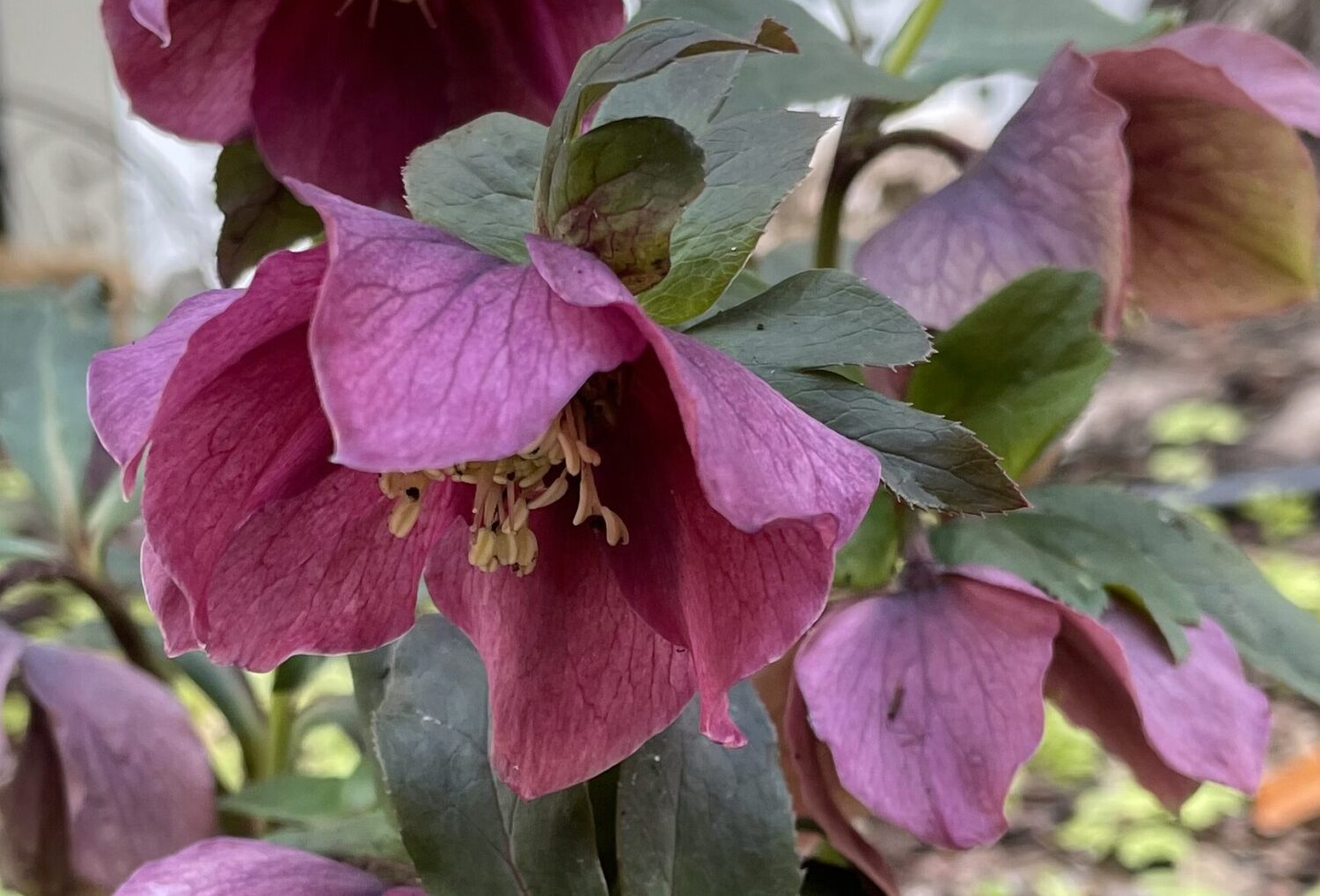When I met John Miller, above, on the Probstein Golf Course in Forest Park one chilly grey morning in late April, he remarked that "the Purple Martins are sulking, they're all puffed up" (to keep warm). Though I had noticed the birdhouses on the golf course many times, I hadn't paid much attention to them or realized that they housed such interesting creatures.
John Miller is, in his words, "a partly-retired marketing & communication guy," and after spending time with him I would add, he's also the Purple Martin "Whisperer" of Forest Park. He's been the solo landlord for 70 nesting units in the park since 2005 when he pestered CWEnder Anabeth Weil, who was Forest Park Manager at the time, to allow him to erect the first Purple Martin house in Steinberg Meadow, see below. John was hoping to lure some of the martins that nested for decades at the Missouri Botanical Garden to a new dwelling site.
Eight pair of martins found their way to Steinberg Meadow that first year. The pods attached to the bottom of the original house you see above were added later. John worked with Forest Park Forever and the Probstein Golf Course to erect more dwelling units on the golf course and Wildlife Island (where there is one unit), so that there is now housing for 140 Purple Martins in Forest Park.
And what's so special about these migratory birds? Purple martins are no slouches when it comes to endurance. Each spring they journey 3000 miles from Brazil to North America (they've been spotted as far north as Canada), arriving in Forest Park sometime in March. Purple Martins are daytime insectivores, feeding on flying insects, and when weather conditions are not springlike, such as they were this year (remember the late March
snow?), John must put crickets he keeps in his freezer in the residences so the birds can survive. The martins were still sulking at the end of April and into May because of the unseasonably cool spring.
John authored an excellent brochure about Missouri's Purple Martins (available from the Missouri Department of Conservation's website here). They are, according to John, a truly American bird that is totally dependent on humans for survival. Providing housing for this highly specialized migratory bird is a tradition that originated with Native Americans. John Miller's interest in Purple Martins began as a child growing up in
Kentucky.
Though Purple Martins are not typically city dwellers, Forest Park hosts the largest urban colony in North America, one of only a handful located in urban areas. There is also a small colony on Staten Island and along the shore of Lake Michigan in Chicago. Interestingly one of his friends has erected martin houses on the grounds of a Ford Motor Co.
plant in Kentucky where the birds are thriving.
John surmises that martins return to Forest Park because it is large and open and close to human activity—the lodgings are first-rate too! The birds largely ignore golf carts whizzing past and people walking by, but depend on the activity, John thinks, to keep predators away. The collars around each pod keeps raccoons out.
The morning we met, John was numbering the dwelling units to keep track of nesting conditions–how many eggs, how many hatch, and if the martins are stressed. He lowers the poles at least once a week to check in on his tenants. The birds don't seem to mind as long as he doesn't keep the apartments lowered for too long.
Purple Martins, with a wing span of 14 inches, are remotely related to barn swallows. They acquire their full purple dress when they are about 2 years old. I wasn't able to capture the color on the dreary morning I visited. Year-old males, subadults, have purple-black patches on their napes, chests and backs, and lighter, dusty-colored chests. They are similar in appearance to female Purple Martins.
Older martins will return year after year to established sites. Younger birds are more easily attracted to newer sites. They generally pair for one season and the female lays 3-7 white eggs. John emailed this morning that eggs are in the nests now, and incubation takes 15 days. After the babies hatch they require 28 days of growth to fledging…so most take flight about the first or second week in July.
In 2011 many Purple Martin babies in Forest Park were banded by the Missouri River Bird Observatory. The organization has banded an amazing 1000 Purple Martins in Missouri to date. That following spring John counted 12 banded birds among those who returned to nest in Forest Park. As the birds make their final departure for Brazil at the end of July, the parents leave with the babies and then come back to the nests for several nights to imprint the location on their offspring.
After the birds depart for Brazil, John dismantles the houses and spends the winter months cleaning and repairing them. He returns the units in late winter, just in time for the breeding cycle to start all over again.
In his humble words, John says he enjoys working with the martins and gains satisfaction from making a contribution to the survival of the Purple Martin, and the enjoyment people derive from watching them.
To learn more about John Miller and his work, head to Cahokia Mounds State Historic Site in Collinsville, Illinois, on Sunday, June 2. He'll be speaking from 1 to 2 p.m. about his favorite birds alongside a large nesting gourd that will be set up on the parking lot of the visitor's center.
To contact him via email put "Purple Martin" in the subject line: [email protected]. You can research www.purplemartin.org for more information too.
